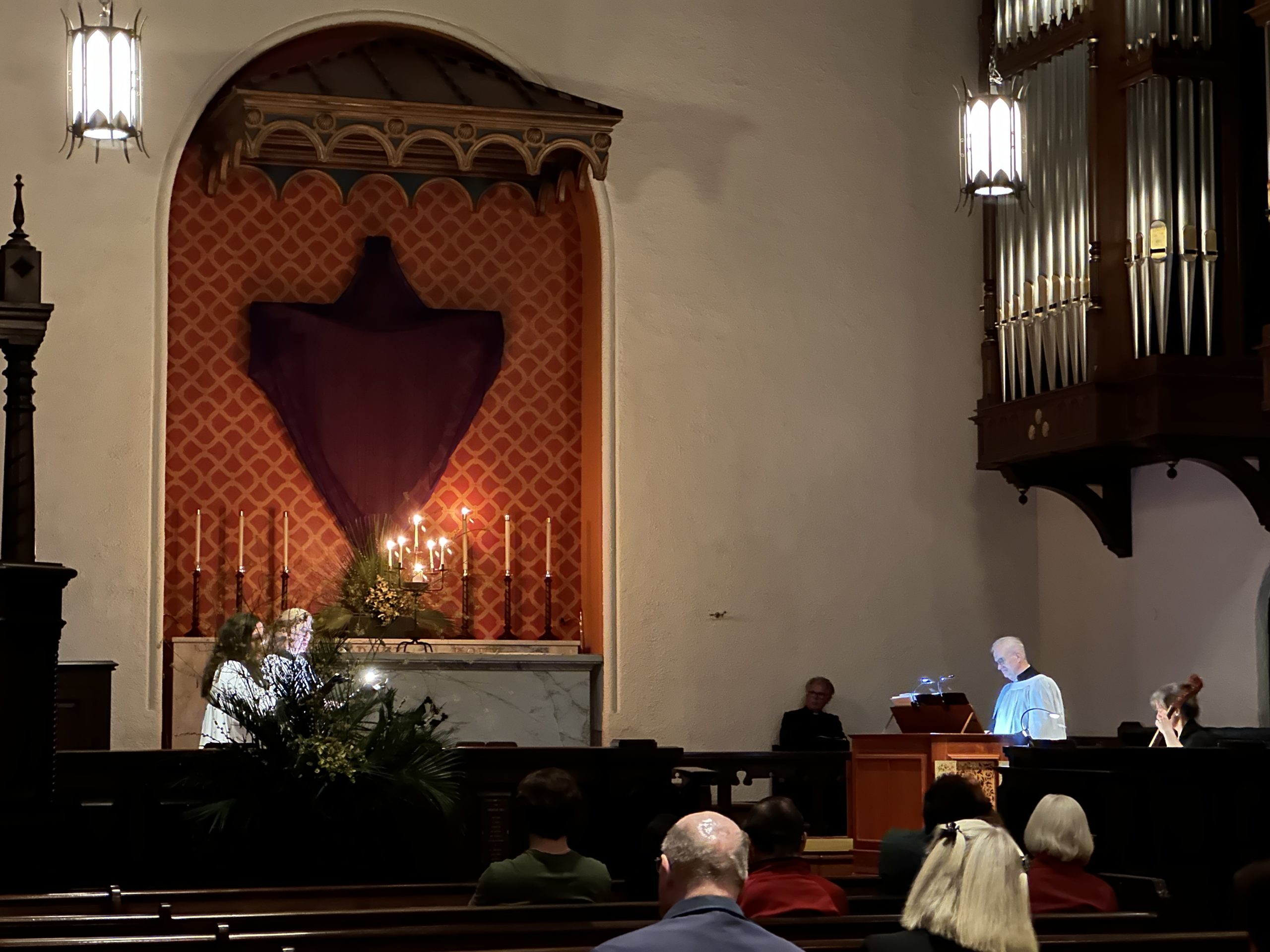Music of François Couperin at St. James by-the-Sea Episcopal Church Tenebrae Service
In the calendar of the church year followed by many Christian churches, the season of Lent is associated with important musical landmarks. We immediately think of the St. Matthew and St. John Passions written by J. S. Bach as well as the sacred oratorios of Handel, which were premiered in Lent because opera performance was banned in London during that season, but oratorio concerts were allowed.
French Baroque composers wrote music for the three days of Holy Week, of which François Couperin’s Leçons de ténèbres is the most celebrated musical expression. Couperin’s text is taken from the book of Lamenations in the Hebrew Bible, a text written after the fall of Jerusalem in 587 B.C.E. which Christian liturgists incorporated into the liturgies for Holy Week.

Tenebrae at St. James by-the-Sea. Sopranos Pamela Narbona & Phoebe Rosquist at left; Bruce Neswick at the organ, and gambist Heather Vorwerk [photo courtesy of Alex Benestelli]
Individually, sopranos Pamela Narbona and Phoebe Rosquist traversed Couperin’s lavish themes with supple, confident artistry, but in the work’s final section where they sing together, their exquisitely matched voices creating a thrilling, unusually shimmering tapestry as they soared into their highest register. The unusual feature of this work is the opening phrase of each section: Couperin creates a florid melisma on a single Hebrew letter, e.g. Aleph introduces the first verse of the first set of Leçons.. Although the texts from Lamentations recount defeat and profound sorrow, there is something about the overall effect of Couperin’s music that suggests confidence and hope beneath the lament.
Organist Bruce Neswick’s apt, understated lead from the chamber organ kept the pulse steady and the music’s direction in clear focus throughout. Gambist Heather Vorwerk’s plangent bass line also proved key to the work’s calm but unrelenting progress.
The service began and ended in complete silence: no announcements, no instructions. The light in the sanctuary was dim, and the candles on the altar were extinguished slowly over the course of the service. Tenebrae offered an avenue of guided meditation, a sustained respite from the commercial, information-driven contemporary world.
This service was offered by St. James by-the-Sea Episcopal Church in La Jolla, CA.

Ken Herman, a classically trained pianist and organist, has covered music for the San Diego Union, the Los Angeles Times’ San Diego Edition, and for sandiego.com. He has won numerous awards, including first place for Live Performance and Opera Reviews in the 2017, the 2018, and the 2019 Excellence in Journalism Awards competition held by the San Diego Press Club. A Chicago native, he came to San Diego to pursue a graduate degree and stayed.Read more…

Such an appropriate and conducive setting for the piece.